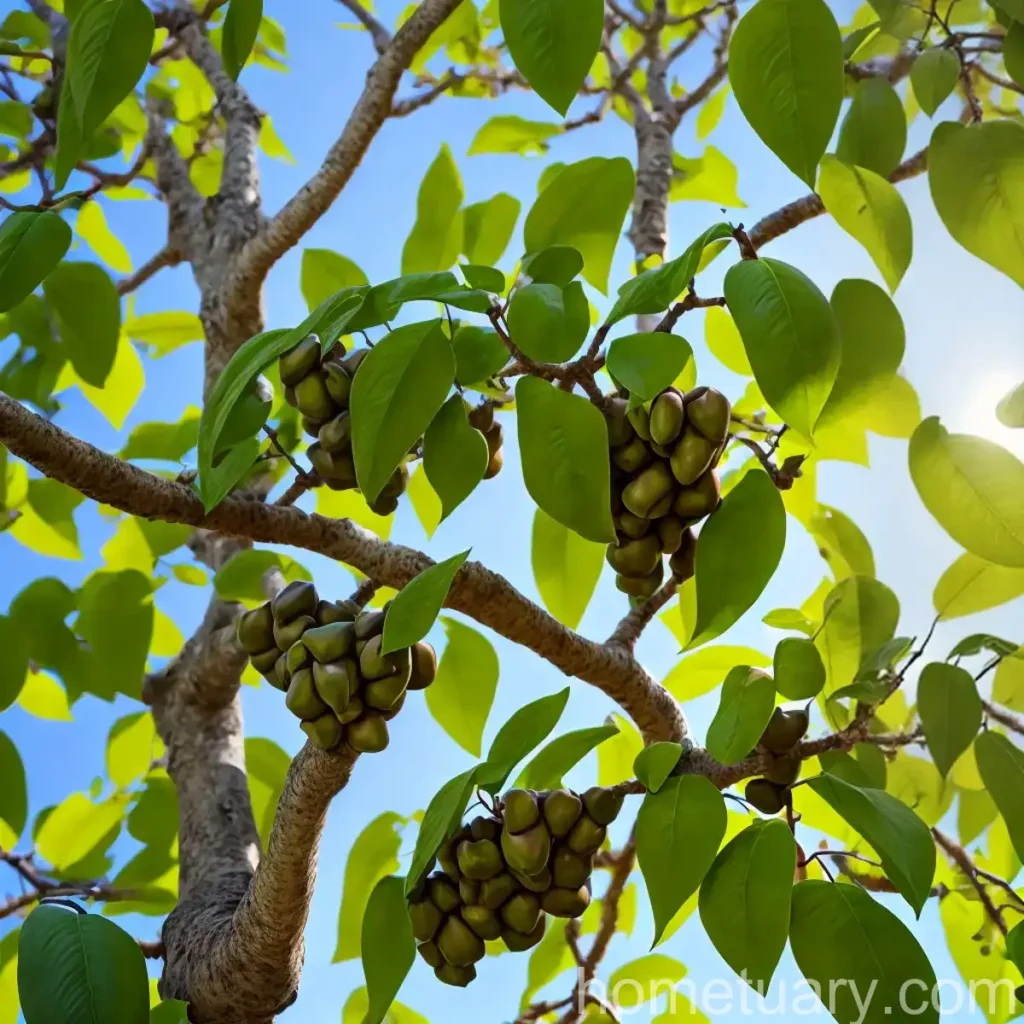The Fascinating World of Pawpaw (Asimina triloba)
In the diverse and captivating realm of plant life, the pawpaw (Asimina triloba) stands as an intriguing and underappreciated gem. Known for its luscious fruits and beautiful appearance, this native North American plant has a rich cultural history and a myriad of practical and ecological uses. In this comprehensive guide, we will delve into the intricate details of the pawpaw plant, exploring its cultivation, uses, care requirements, and much more.
What is Pawpaw (Asimina triloba)?
Pawpaw, scientifically referred to as Asimina triloba, is a deciduous fruit tree belonging to the Annonaceae family. This species is native to the eastern United States and a few regions in southern Canada, thriving in fertile, well-drained soils within its natural habitat. The tree is renowned for its large, oblong-shaped fruits, which are the largest edible fruit indigenous to North America. Pawpaw trees typically reach heights of 15 to 30 feet, with alternate, simple leaves and maroon flowers that bloom in early spring.
Key Takeaways – Pawpaw (Asimina triloba)
Before we embark on this journey to unravel the hidden marvels of the pawpaw plant, let’s glance at the key takeaways that we will explore in this guide:
- Culture
- Uses
- Water
- Sunlight
- Fertilizer
- Soil
- Pruning
- Propagation
- Container Popularity
- Common Diseases
- Disease Diagnosis
- Common Pests
- Botanist’s Tips
- Fun Facts
- Links to External Resources
Culture
Cultivating pawpaw trees entails a thorough understanding of their environmental and care requirements to ensure optimal growth and fruit production. Here are some essential aspects of pawpaw culture:
Water
Pawpaw trees necessitate consistent moisture, especially during their initial years of growth. Adequate watering is critical during dry spells to prevent stress and encourage healthy development. However, they are susceptible to root rot if excessively watered, so well-drained soil is essential to prevent waterlogging.
Sunlight
Pawpaw trees favor partial shade to full sun conditions, thriving in environments with dappled sunlight or filtered shade. However, young trees may benefit from some shade during their early stages of growth, as intense sunlight can be detrimental to their delicate foliage.
Fertilizer
Fertilizing pawpaw trees is crucial for promoting robust growth and fruit production. Using a balanced fertilizer with a higher potassium content can be beneficial. It is advisable to apply fertilizer in small quantities and avoid excessive nitrogen, which can lead to vegetative growth at the expense of fruit development.
Soil
Pawpaw trees thrive in rich, moist, well-drained soils with a slightly acidic to neutral pH. They are particularly sensitive to compaction and prefer loamy or sandy loam soils that offer good aeration and drainage.
Uses
The pawpaw tree offers a plethora of uses that extend beyond its delectable fruits. Its versatility and ecological significance make it a valuable addition to both cultivated landscapes and natural ecosystems.
Pruning
Pruning is a crucial aspect of pawpaw tree care, aiding in the maintenance of an open canopy and the removal of dead or diseased branches. Proper pruning practices can enhance air circulation within the tree’s canopy, reduce the risk of diseases, and stimulate the production of larger, high-quality fruits.
Propagation
Pawpaw trees can be propagated through both seeds and vegetative methods. However, they exhibit a degree of genetic heterozygosity, and seedlings may not retain the exact characteristics of their parent trees. Grafting and other vegetative propagation techniques offer a more reliable means of preserving desirable traits in new trees.
Container Popularity
Pawpaw trees have gained popularity among gardening enthusiasts for cultivation in containers, allowing individuals with limited outdoor space to enjoy the beauty and bounty of these remarkable trees. Container-grown pawpaws require attentive care to thrive, with considerations for their root space, moisture levels, and overall environmental conditions.
Common Diseases
Like many fruit-bearing trees, pawpaw trees are susceptible to various diseases that can impact their growth and productivity. Understanding the common diseases that affect pawpaw trees is crucial for implementing timely preventative measures and management strategies.
Disease Diagnosis
Accurately identifying and diagnosing diseases in pawpaw trees is essential for implementing effective control measures. Visual symptoms, such as leaf spots, cankers, and wilting, provide valuable clues for determining the specific disease affecting the tree, enabling targeted treatment and management approaches.
Common Pests
Pawpaw trees are vulnerable to a range of insect pests that can inflict damage on their foliage, flowers, and fruits. Recognizing these pests and their distinctive signs is essential for implementing integrated pest management strategies that minimize their impact on the trees.
Botanist’s Tips
As a plant scientist with a keen interest in pawpaw trees, I offer the following expert tips to enhance the cultivation and care of these remarkable plants:
- When planting pawpaw trees, ensure that they are positioned in a location with adequate protection from strong winds, as their branches are relatively brittle.
- Regularly inspect the leaves and fruit for any signs of pests or diseases, promptly addressing any issues that may arise to maintain the tree’s health and productivity.
- When fertilizing pawpaw trees, opt for organic, slow-release fertilizers to avoid the risk of over-fertilization, which can negatively impact the tree’s overall well-being.
Fun Facts
Uncover the intriguing world of pawpaw trees with these captivating and little-known fun facts:
- The pawpaw fruit boasts a uniquely tropical flavor, often described as a blend of banana, mango, and pineapple, making it a highly sought-after delicacy.
- Pawpaw trees are the exclusive host plants for the zebra swallowtail butterfly, playing a vital role in supporting the lifecycle of this striking butterfly species.
- North American Indigenous tribes hold a rich cultural reverence for the pawpaw tree, with historical uses of its fruits and bark in traditional medicine and cuisine.
Links to External Resources
Explore the boundless realm of pawpaw trees by delving into these valuable external resources:
- National Park Service – All About Pawpaws
- Kentucky State University – Pawpaw Program
- Ohio Pawpaw Growers’ Association
- Pawpaw: In Search of America’s Forgotten Fruit (Book)
In conclusion, the pawpaw (Asimina triloba) stands as a captivating and invaluable component of North America’s botanical heritage, offering not only delectable fruits but also ecological significance and cultural resonance. By understanding its cultivation, uses, and care requirements, we can foster a deeper appreciation for this extraordinary tree and its contributions to our natural landscapes and culinary traditions. Whether relishing its sumptuous fruits or marveling at its ecological interactions, the pawpaw tree continues to enthrall and inspire all who encounter its allure.















